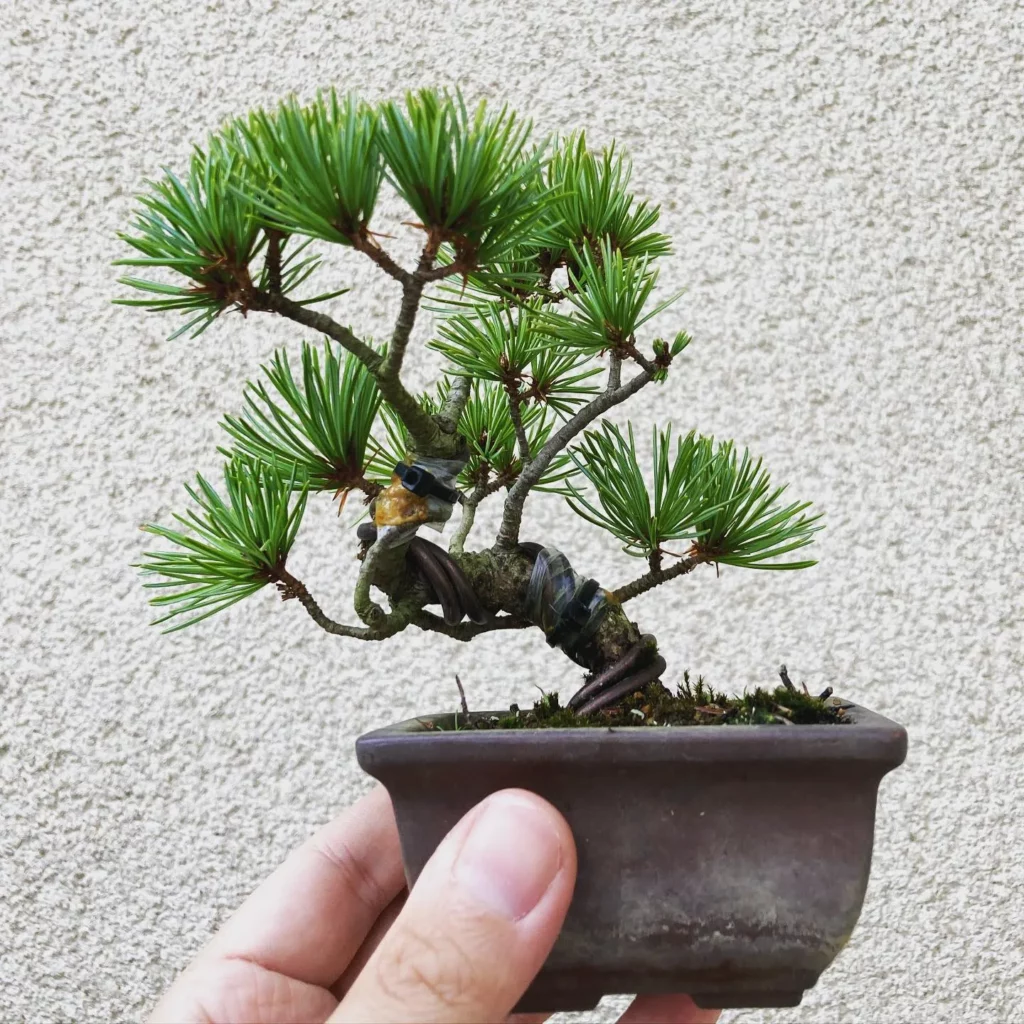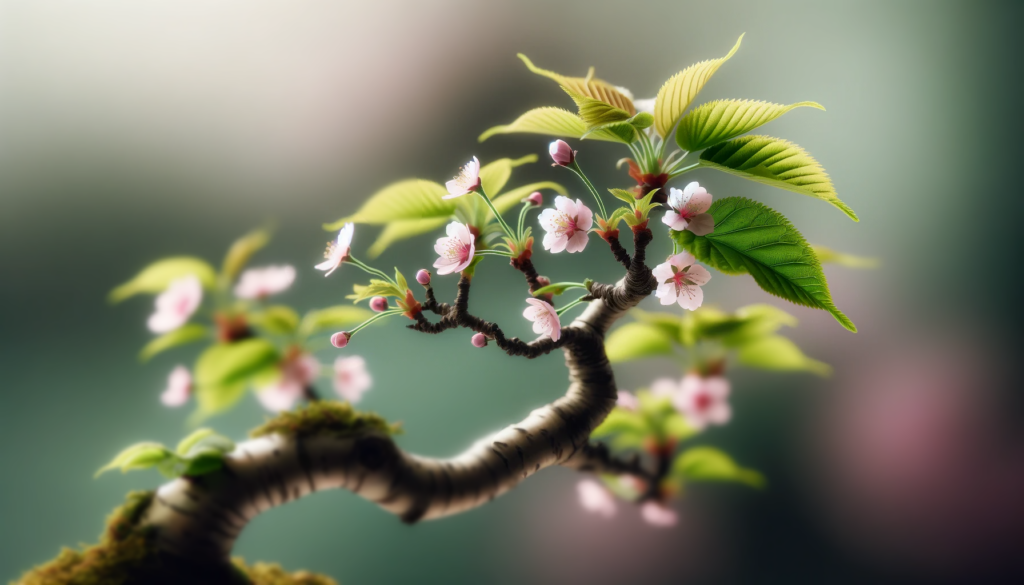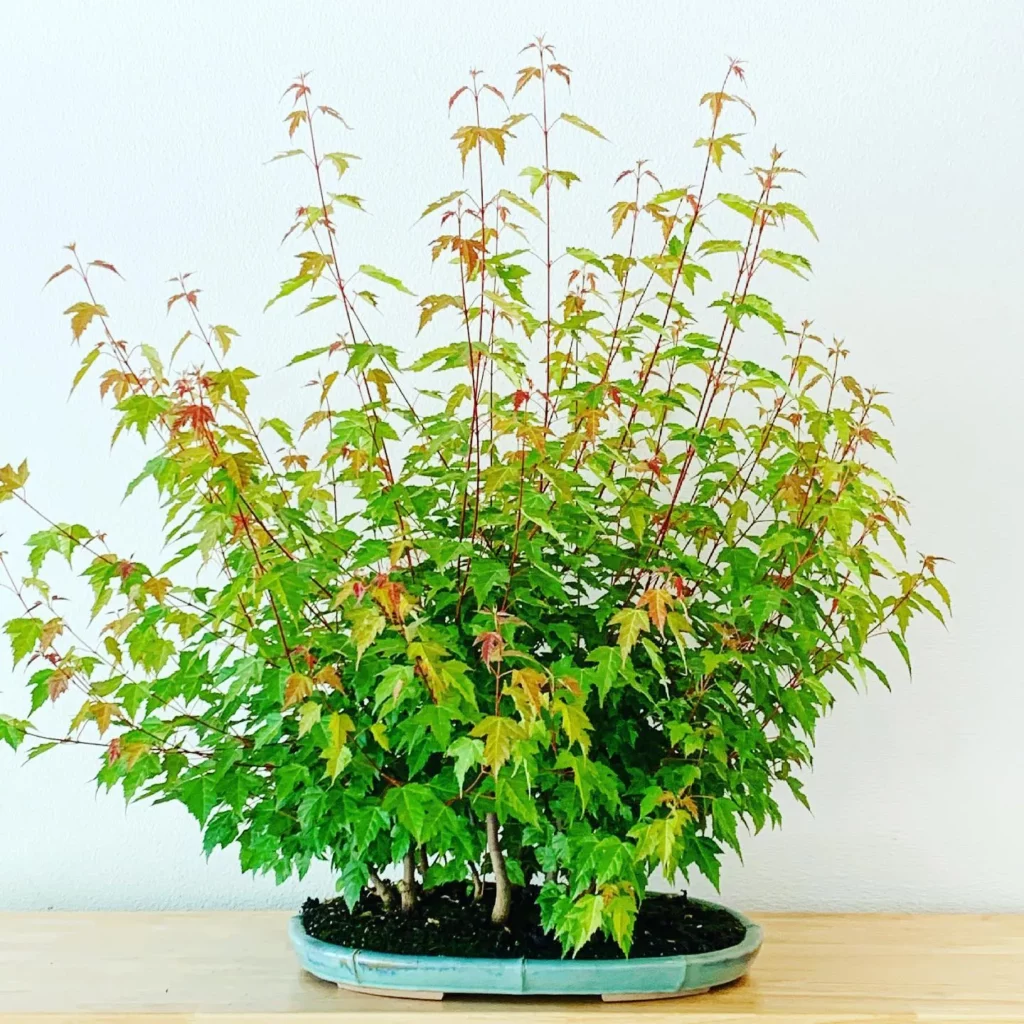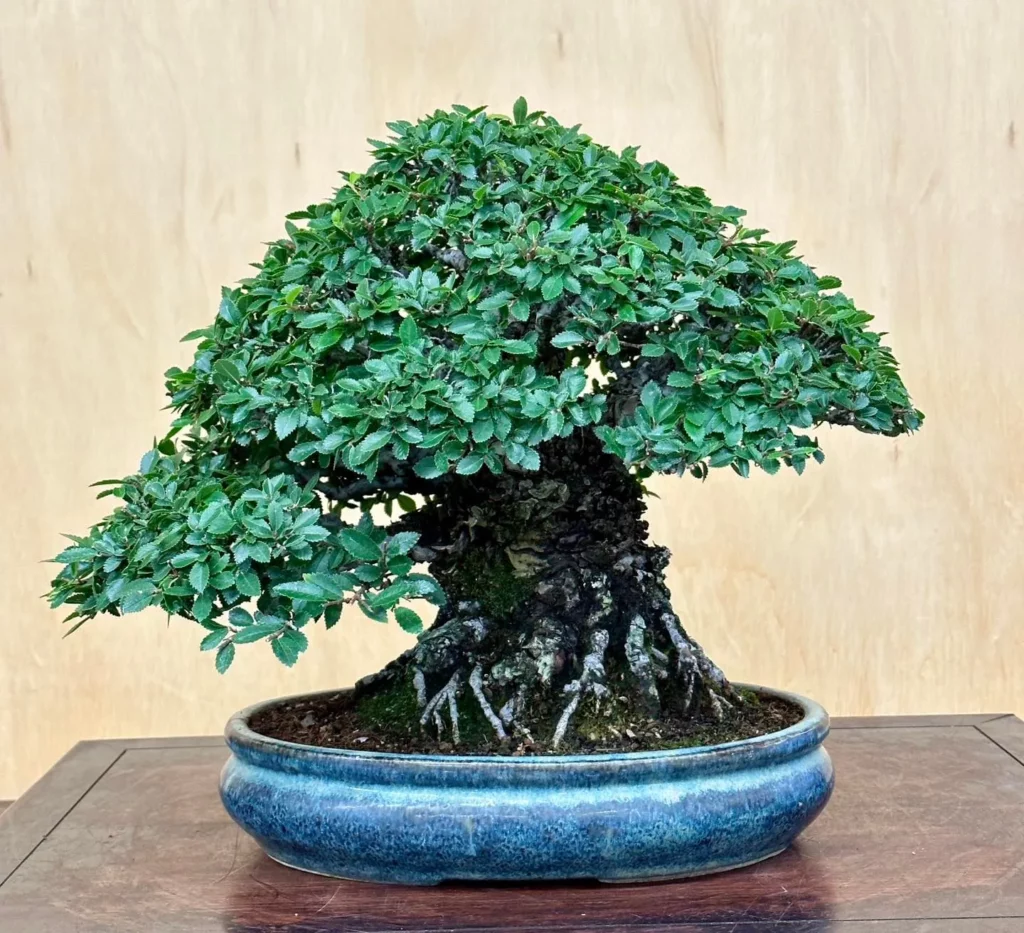Keeping your bonsai trees healthy and vibrant is a rewarding experience. However, just like any other plant, bonsai trees can fall victim to pesky invaders that can damage their delicate structure and hinder their growth. That’s why understanding and managing bonsai pests is crucial for the long-term health and beauty of your collection.
In this article, we will explore the common pests that can plague your bonsai trees, provide tips on how to identify them, and share effective strategies for their management. By learning how to identify and manage these pests, you can ensure the well-being of your bonsai trees and continue to enjoy their beauty for years to come.
The Most Common Pests in Bonsai

When it comes to bonsai trees, pests can pose a significant threat to their health and beauty. Knowing the most common pests that affect bonsai trees is essential for effective pest management. Here are some of the common bonsai pests you should watch out for:
- Scale Insects: These tiny pests feed on the sap of bonsai trees, causing wilting leaves and yellowing foliage.
- Aphids: Aphids are small insects that suck the sap from bonsai trees, leading to leaf yellowing and curling.
- Spider Mites: Spider mites are extremely tiny and can cause discoloration and speckling on bonsai leaves.
- Mealybugs: Mealybugs produce a cotton-like substance on bonsai trees and can damage leaves by sucking sap.
Scale Insects: Damage and Treatment
Scale insects are a common threat to the health of bonsai trees. These sap-sucking pests can cause extensive damage by feeding on the tree’s sap, depriving it of essential nutrients and moisture.
Scale infestations can manifest in various ways, including stunted growth, wilted leaves, and the production of sticky honeydew. The presence of honeydew can attract other pests, further exacerbating the problem.
Understanding Scale Infestation
Scale insects typically appear as small, circular or oval-shaped bumps on the stems, leaves, or branches of bonsai trees. They may be white, brown, or black, depending on the species.
These pests have a protective outer shell or scale that shields them from predators and environmental factors. Their sedentary lifestyle makes them challenging to control once they establish themselves on the tree.
Treating Scale Infestation
To effectively manage and treat scale on bonsai, several options are available:
- White Oil: White oil sprays, readily available at garden centers, can suffocate and kill scale insects. Apply the spray thoroughly, ensuring complete coverage of all affected areas.
- Congruard: Congruard is an ideal systemic insecticide that eliminates scale by penetrating the tree’s tissues. Follow the manufacturer’s instructions for dosage and application.
- Lime Sulfur: Lime sulfur produces excellent results against scale infestation. Dilute the lime sulfur according to the instructions and carefully apply it to the affected areas with a brush or sprayer.
In severe cases, a combination of treatments may be necessary. Monitor the tree closely and reapply treatments if needed, focusing on areas with active scale insects.
Note: When using any treatment, it is essential to follow the instructions carefully to prevent damage to the bonsai tree.
Aphids: Identifying and Treating the Tiny Menace

Aphids are tiny, sap-sucking insects that pose a threat to the health of your bonsai trees. These pests feed on the sap, causing leaves to yellow and curl. If left untreated, aphids can weaken the tree and make it more susceptible to other pests and diseases.
To effectively tackle an aphid infestation on your bonsai, it’s crucial to first identify their presence. One sign of aphids is the presence of clustered insects on the undersides of leaves and stems. These insects can vary in color from green to brown or even black, depending on the species of aphid.
Once you have confirmed the presence of aphids on your bonsai, it’s essential to take immediate action to prevent further damage. There are two commonly used treatments for aphids on bonsai: congruard and white oil sprays.
Congruard
Congruard is an effective insecticide that can be used to control aphids on bonsai trees. It is available in liquid form and can be easily applied to the affected areas. Congruard works by suffocating and killing the aphids on contact.
When using congruard, carefully follow the instructions provided by the manufacturer. It’s important to apply the insecticide evenly, covering both the tops and undersides of the leaves as well as the stems. Repeat the treatment as necessary to ensure complete eradication of the aphids.
White Oil Sprays
Another option for treating aphids on bonsai is the use of white oil sprays. White oil is a mixture of vegetable oil and soap, which acts as a suffocating agent for the aphids. It effectively coats and smothers the pests, preventing them from feeding on the sap of the tree.
No products found.
Prepare the white oil spray by mixing 2 tablespoons of vegetable oil with 1 teaspoon of liquid soap in a gallon of water. Shake the solution well before spraying it onto the bonsai, making sure to cover all affected areas. Repeat the treatment every 7-10 days until the aphids are eradicated.
Spider Mites: Unveiling the Silent Weavers

Spider mites can be a hidden menace in your bonsai collection. These tiny arachnids are difficult to spot without a microscope, but their impact on your trees can be significant. Identifying spider mites is crucial for effective control and prevention.
One of the telltale signs of a spider mite infestation is discoloration and speckling on the leaves. If you notice yellowing, browning, or a stippled appearance, it’s likely that spider mites are at work. Additionally, these pests are known for creating fine webbing on the tree, particularly in heavily infested areas.
Controlling spider mites requires a multi-faceted approach. Here are some spider mite control techniques for bonsai you can employ:
-
Increasing humidity: Spider mites thrive in dry environments, so it’s essential to raise the humidity around your bonsai. Misting the foliage regularly will help create a less favorable environment for these pests.
-
Introducing predatory mites: Predatory mites are natural enemies of spider mites. These beneficial insects can help keep the population in check. Consider introducing them to your bonsai trees as part of your integrated pest management strategy.
-
Ensuring proper air circulation: Spider mites prefer still air, so improving air circulation around your bonsai can discourage their presence. This can be achieved by strategically placing fans or by positioning your trees in areas with adequate airflow.
Mealybugs: The Delicate Invaders

Mealybugs are small insects that can wreak havoc on your bonsai trees. These tiny pests are known for producing a cotton-like substance on the tree, which serves as their protective covering. However, their soft appearance disguises their destructive nature. Mealybugs suck the sap from the bonsai, causing leaves to wilt and drop prematurely.
Identifying a mealybug infestation can be challenging, as these pests tend to congregate in concealed areas such as leaf nodes and crevices. However, you may notice the presence of their cottony residue on the branches and roots of your bonsai.
Treating Mealybugs on Bonsai
If you discover mealybugs on your bonsai, it’s crucial to take immediate action to prevent further damage. Here are some effective methods for treating mealybugs:
- Physical removal: Gently wiping the affected areas with alcohol swabs can help physically remove mealybugs from your bonsai. This method is best suited for minor infestations.
- Insecticidal sprays: Using insecticidal sprays containing neem oil or other suitable insecticides can effectively control mealybug populations. Ensure that you follow the instructions on the product label and apply the spray evenly on the affected parts of your bonsai. This method is more appropriate for moderate to severe infestations.
- Natural predators: Introducing natural predators like ladybugs can be an organic and environmentally friendly approach to controlling mealybugs. Ladybugs feed on mealybugs and can help keep their population in check.
Caterpillars: Managing Leaf-Munching Culprits
Caterpillars can be a common nuisance for bonsai trees, causing significant damage by chewing on the leaves. If left unchecked, a caterpillar infestation can weaken the tree and hinder its overall health and growth. However, by implementing effective control measures, you can manage and mitigate the impact of these leaf-munching culprits.
Identifying Caterpillar Infestations
To effectively control caterpillars on your bonsai, it’s crucial to identify the infestation early on. Look for signs of chewed leaves and the presence of frass, which is caterpillar excrement, near the affected areas. Inspect the undersides of leaves and the crevices of branches as caterpillars often hide in these spots.
Addressing Minor Infestations
If you notice a minor caterpillar infestation, you can take immediate action to limit their damage. One effective method is to handpick the caterpillars from the tree. Carefully examine the foliage and remove the caterpillars by gently plucking them off with your fingers or using tweezers. Ensure you dispose of them away from the bonsai to prevent reinfestation.
- Thoroughly inspect the entire tree, paying close attention to the affected areas.
- Identify and remove any visible caterpillars you come across.
- Dispose of the caterpillars in a sealed container or place them in a bag and dispose of them in an outdoor trash bin.
Managing Larger Infestations
If the caterpillar infestation is extensive or beyond the reach of manual removal, you may need to employ additional control methods. One effective solution is using Bacillus thuringiensis (BT), a natural bacteria-based insecticide specifically designed to target caterpillars. Spraying the affected areas with BT can effectively eliminate the pests while minimizing harm to beneficial insects.
Another preventive measure to consider is using protective barriers such as netting. Placing fine mesh netting over your bonsai tree can serve as a physical barrier, preventing adult moths from laying eggs on the foliage and therefore reducing the risk of future infestations.
- Apply Bacillus thuringiensis (BT) according to the manufacturer’s instructions.
- Thoroughly spray the affected areas, ensuring complete coverage.
- Reapply the insecticide as needed or as recommended by the manufacturer.
Preventing and Managing Bonsai Diseases
Fungal diseases, bacterial diseases, and viral infections are common bonsai diseases that can impact the health of your trees. It is important to take preventive measures to ensure the well-being of your bonsai collection.
To prevent the onset of diseases, you should:
No products found.
- Maintain proper drainage in your bonsai pots to avoid overwatering, which can lead to fungal infections.
- Practice good hygiene by removing fallen leaves and debris from the soil surface. This helps eliminate potential breeding grounds for bacteria and fungi.
- Regularly disinfect your bonsai tools using a solution of mild detergent and water or rubbing alcohol. This reduces the risk of transmitting diseases from one tree to another.
In case your bonsai trees are affected by fungal or bacterial diseases, you can take the following steps to manage the problem:
- Identify and prune affected parts of the tree, making clean cuts to remove the diseased tissue.
- Apply fungicides or copper-based sprays as directed by the manufacturer. These products help control the spread of fungal and bacterial diseases.
Integrated Pest Management (IPM) for Bonsai
Integrated Pest Management (IPM) is a comprehensive and sustainable approach to controlling pests in bonsai trees. Rather than relying solely on chemical pesticides, IPM combines various strategies to achieve effective pest management while minimizing environmental impact.
Implementing IPM in your bonsai care routine involves a combination of cultural, mechanical, and biological controls. By following these pest control strategies, you can maintain a healthy and thriving bonsai collection:
- Regular Inspection: Conduct routine inspections of your bonsai trees to look for signs of pests or damage. Check the foliage, branches, and trunk carefully for any abnormalities.
- Good Growing Conditions: Create optimal growing conditions for your bonsai trees. Ensure proper sunlight, water, and nutrient levels, as healthy trees are more resistant to pest infestations.
- Introduce Natural Predators: Encourage the presence of beneficial insects or other natural predators that prey on bonsai pests. Ladybugs, lacewings, and predatory mites are examples of natural enemies that can help control pest populations.
- Targeted Pest Control Products: When necessary, use targeted pest control products that are specifically designed for the identified pests in your bonsai. Follow the instructions carefully and minimize the use of broad-spectrum chemical pesticides.
Quarantine Practices for Pest Prevention
When it comes to ensuring the health and vitality of your bonsai collection, implementing quarantine practices is paramount. Quarantine plays a crucial role in preventing the spread of pests and diseases that could potentially devastate your cherished trees. It is especially important to establish a quarantine period for new bonsai acquisitions to monitor and prevent any potential pest infestations from spreading to other trees.
During quarantine, keep the new bonsai separate from the rest of your collection. This physical separation helps contain any unidentified pests or diseases that may be present. Regularly inspect the quarantined bonsai for signs of pests, such as unusual damage or infestations. By closely monitoring their health, you can swiftly identify and address any issues before they impact the entire collection.
In addition to isolation and inspection, strict hygiene practices are vital during quarantine. Clean and disinfect your tools after each use to prevent cross-contamination between trees. Regularly clean the pots, benches, and surrounding areas to remove any potential sources of infestation. By maintaining a clean and pest-free environment, you can significantly reduce the risk of introducing pests or diseases to your bonsai collection.
After this check out our other articles on:
FAQ
How can I keep my bonsai trees healthy and pest-free?
Regular inspection, proper growing conditions, and early detection are key to managing bonsai pests effectively. Maintaining the right environment for your bonsai trees and keeping a close eye on them will help prevent and address any pest infestations.
What are the most common pests that affect bonsai trees?
Scale insects, aphids, spider mites, mealybugs, and caterpillars are among the most common pests that can damage bonsai trees. These pests can cause wilting leaves, yellowing foliage, discoloration, and other signs of distress.
How do I identify and treat scale insects on my bonsai tree?
Scale insects are sap-sucking pests that can cause stunted growth, wilted leaves, and honeydew on bonsai trees. Treating scale on bonsai involves using white oil, congruard, or lime sulfur sprays to suffocate and control the infestation.
What should I do if I find aphids on my bonsai tree?
Aphids are small insects that suck sap and cause leaves to yellow and curl. Treating aphids on bonsai can be done with congruard or white oil sprays, which effectively kill the pests on contact.
How do I identify and control spider mites on my bonsai?
Spider mites are tiny arachnids that can cause discoloration and speckling on bonsai leaves. They are difficult to spot without a microscope and can create webbing on the tree. Controlling spider mites involves misting the foliage to raise humidity, introducing predatory mites, and ensuring proper air circulation.
What should I do if I find mealybugs on my bonsai tree?
Mealybugs are small insects that produce a cotton-like substance on bonsai trees and cause leaf drop. Treating mealybugs involves physically removing them with alcohol swabs or using insecticidal sprays containing neem oil. Introducing natural predators like ladybugs can also help control the infestation.
How can I manage caterpillars that are damaging my bonsai foliage?
Caterpillars can cause significant damage to bonsai leaves by chewing on them. Minor caterpillar infestations can be addressed by handpicking the caterpillars, while larger infestations may require the use of Bacillus thuringiensis (BT) or protective barriers like netting to prevent egg-laying.
How can I prevent and manage diseases in my bonsai trees?
Preventing bonsai diseases involves maintaining proper drainage, practicing good hygiene, and regularly disinfecting tools. Pruning affected parts and applying fungicides or copper-based sprays can help manage fungal and bacterial diseases.
What is Integrated Pest Management (IPM) for bonsai?
Integrated Pest Management (IPM) is a holistic approach to managing pests in bonsai trees. It involves combining cultural, mechanical, and biological controls to minimize the use of chemical pesticides. Regular inspection, maintaining good growing conditions, introducing natural predators, and using targeted pest control products when necessary are some IPM strategies.
Why is quarantine important for bonsai trees?
Quarantine practices are essential for preventing the spread of pests in your bonsai collection. When introducing new bonsai, it’s important to isolate them for a period to monitor and prevent any potential infestations from spreading to other trees. Quarantine involves keeping the new bonsai separate from the rest of the collection and regularly inspecting for signs of pests. Maintaining strict hygiene practices during quarantine can help protect the health of your bonsai trees.




